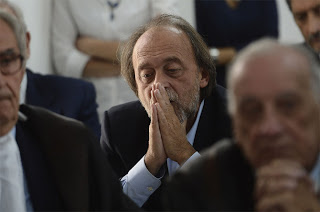I am reading an acclaimed book called The View From Lazy Point: A Natural Year in an Unnatural World by Carl Safina. One description of the book says "In this intertwined story, Carl Safina shows us that nature and human dignity require each other. The View from Lazy Point follows the arc of the seasons from Safina’s home waters of eastern Long Island to far horizons of the globe, from the Arctic to Antarctica and across the tropics."
This is quite a good synopsis of a very worthwhile book. Safina, an environmentalist, lives in a reclaimed cottage on Lazy Point, a spit of land near Long Island. While it is a place of remarkable wildlife, it is close to millions of people and the pressure of huge numbers of human neighbours is evident to Safina.
I considered the fate of Lazy Point as I picked up the book to read on the evening Superstorm Sandy crashed into that area. This storm humbled humanity as it tossed aside all preparedness and swept the sea inland in a devastating onslaught. Are the buildings of Lazy Point gone, including Safina's refuge? Does the point itself still exist? We're told that the shoreline has been altered in many locations along that shore.
I muse about climate change regularly and our response as Christians. We know from scripture the danger of hubris, a false pride in our human abilities which can lead to a fall. I do wonder if the severity of this storm is more than an "act of nature" or "act of God." We could inadvertently be the culprits with our unnatural choices. Needless to say, while there is scientific speculation to "connect the dots" between climate change and Sandy, there isn't a definitive outlook and probably can't be.
What are your thoughts about Sandy? Has this weather event and others like it affected your opinions about climate change?





























